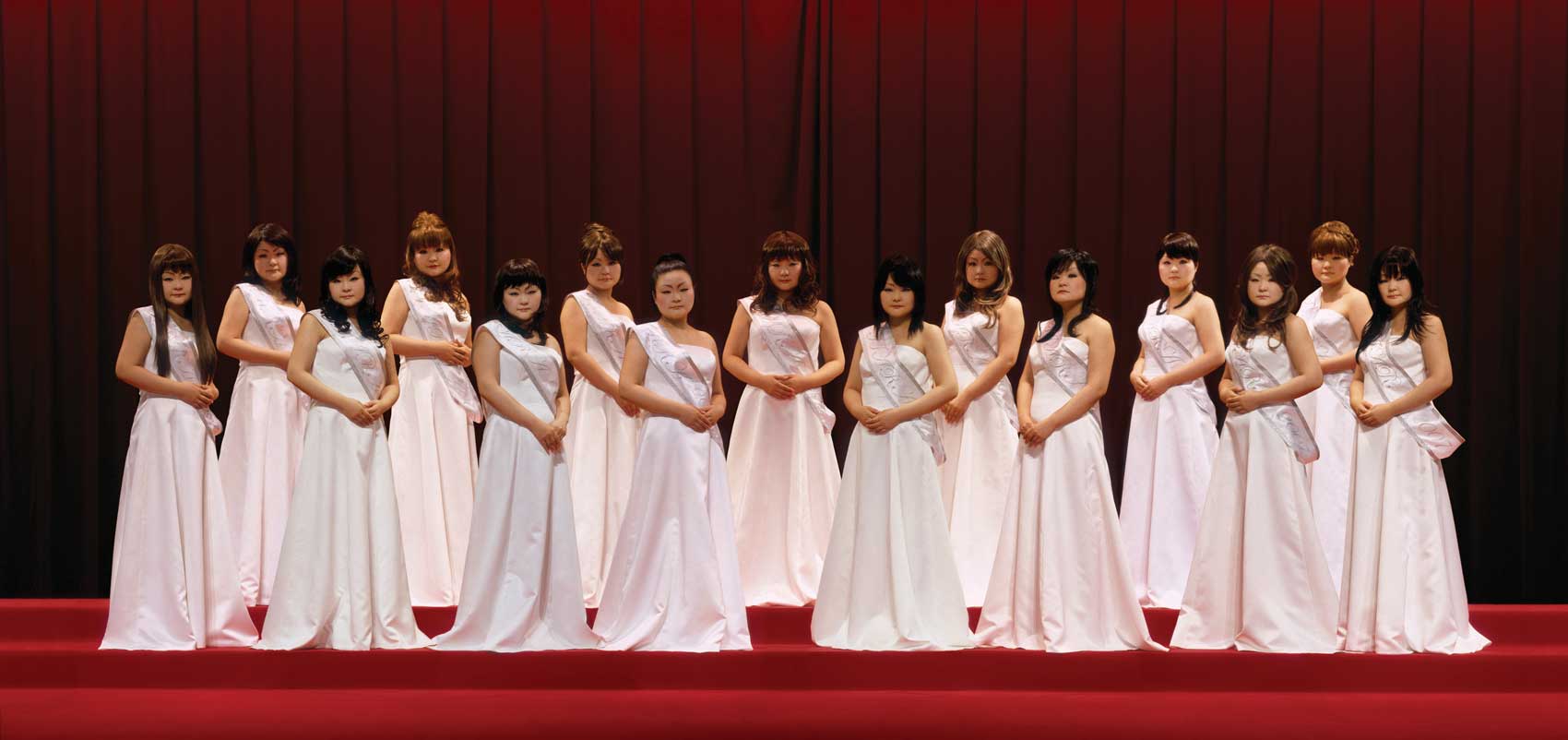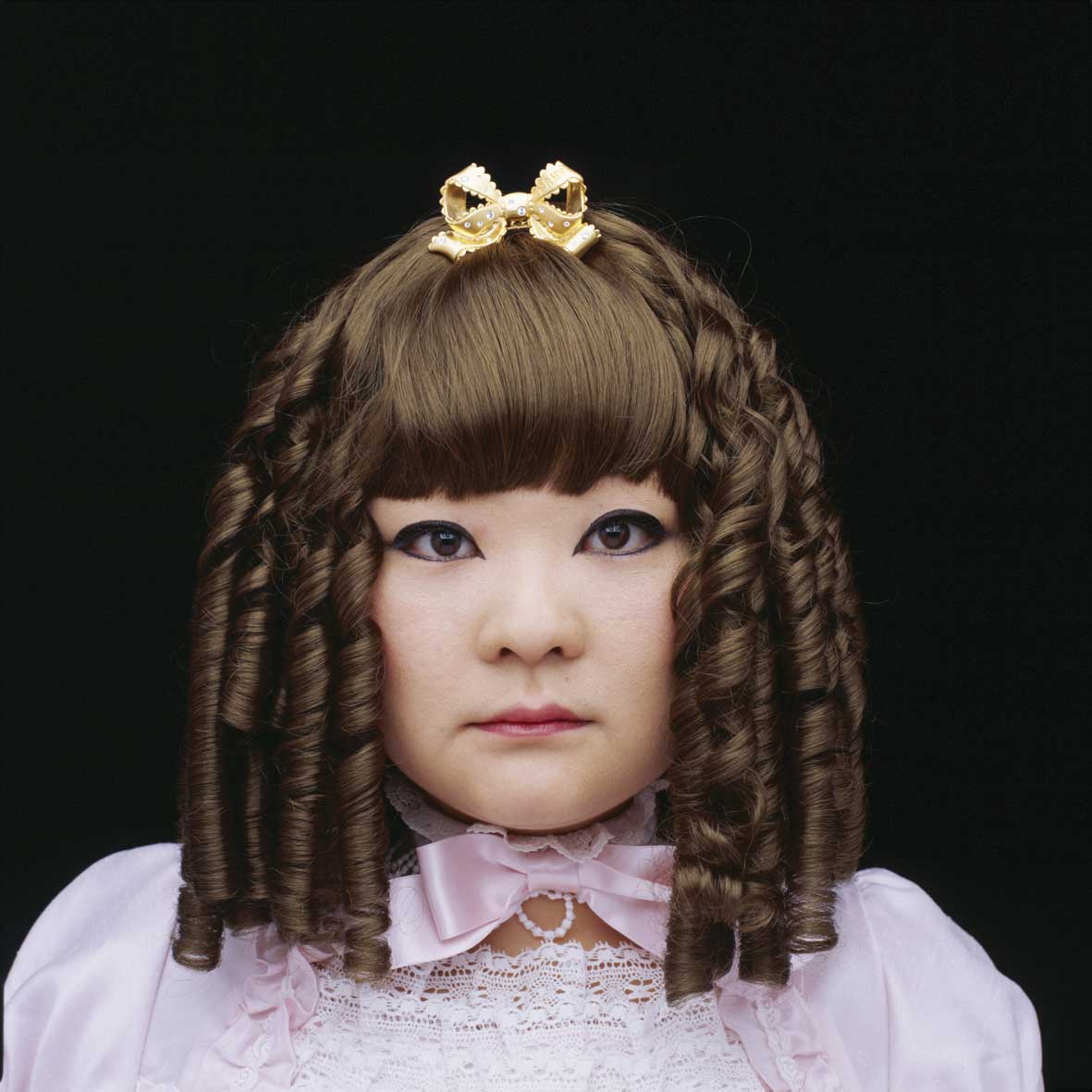Living as a woman in Japan I have undergone a number of metamorphoses since childhood. Whenever I change my hairstyle, clothes or make-up; my way of talking, tone of voice, or the way I move the muscles in my face, the reaction I get from people around me changes too. At school I started running around in a black T-shirt and brown trousers instead of the pink outfit my mother had chosen for me, and my teacher started treating me like a naughty little tomboy rather than a nice obedient little girl. At university I adopted the flashy so-called gyaru (gal) look, bleached my hair brown and wore miniskirts with skin-tight camisoles, looking like one of Sawada’s images. I soon found that the progressive girls started inviting me along to offbeat places, bars and clubs; guys asked me out on dates, and I was often chatted up on the street. When I had to get a job I dyed my hair black again and wore natural make-up. The company brass interviewing me commented fondly on what a ‘serious girl’ I was, and girls dressed exactly like me would strike up conversations. I always tried to metamorphose into my optimal self to fit whatever the context demanded.
As far as I was concerned, clothes and make-up were cosplay tools – simply by changing them I could metamorphose into another character, as if by magic. And then the way other people behaved towards me changed, as though I were a totally different person.
Looking at Sawada’s photos now, I am overwhelmed by the feeling that all my transformations, which I always took for granted as something I just did, were actually more peculiar and intriguing than I imagined. I thought of my metamorphoses as a way of emphasising or externalising certain aspects of myself. I assumed that it had to be something that was already there within me, otherwise I would immediately be exposed as a fraud. But if Sawada can transform herself without limit, maybe I can too. Perhaps there is no end to the metamorphoses.
I sometimes find myself judging someone’s character after just one glance at their clothes and hairstyle, or their make-up and facial expressions. I used to think that my own gaze as I did so was dishonest. But Sawada’s photographs made me realize that this type of human behaviour is rather endearing after all; my imagination runs wild with what Sawada’s fabricated personas might be like, how their daily routines go, and what their speech mannerisms might be. I might like some of her characters, and be taken aback by others. I might turn down that one if she turned up for a job interview, while the one next to her looks like a hard worker . . . The way I instantly judge these proliferating Sawadas is frightening, but I also find it rather peculiar and endearing.
Judging someone by their appearance, I think, is also really animal-like. They spread their wings wide during courtship, or make themselves appear larger. Humans wear colourful clothes, paint their faces or tie their hair up in amazing shapes in the hopes of creating a certain impression. These acts of transformation may have a city-like characteristic, but they are also primitive and innate within us. Aliens surely would find this type of human behaviour peculiar and endearing too. The numerous Sawadas in these photographs made me reflect on the strange nature of humanity. What an interesting animal the human is.
Sayaka Murata
translator’s note: The Japanese language is more tolerant of repetition than English. Sayaka Murata’s use of words in this piece was very deliberate, and certain words are repeated: ‘metamorphose’, ‘change’, ‘transform’, ‘peculiar’, ‘endearing’.
The term ‘cosplay’ refers to the practice of dressing up as favourite characters from movies, manga, games and so forth. Murata’s use of it here indicates deliberation, not the imitation of particular characters.
















